Many new antique additions have arrived into our central London showroom. From the classical, to the unique and unusual, all of which connect with the English country house style that is the foundation of the Jamb aesthetic.
New additions from the classical to the unusual antique.
12 August 2016
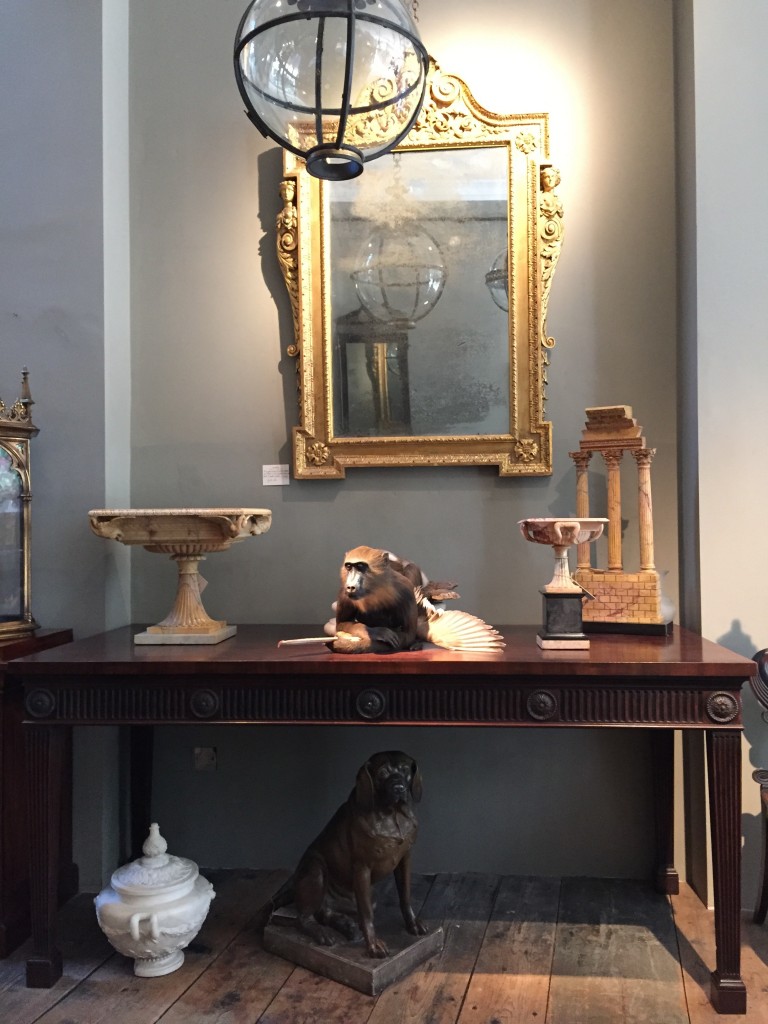
Striving to find these artefacts in ‘country house’ condition – untouched and untampered with is my sole aim when I am buying. However, there are many times when an antique has to be salvaged, restored and saved, reconnecting the piece to its original craftsmanship, history and authenticity. The fine quality of this Adam period mahogany side table above reflects the finest craftsmanship of the 18th century, with its rectangular crossbanded top and fluted rosette decorated frieze detail.The table has an extraordinary strength of design. The legs flare as they follow the flutes down and terminate in sophisticated blocked feet.
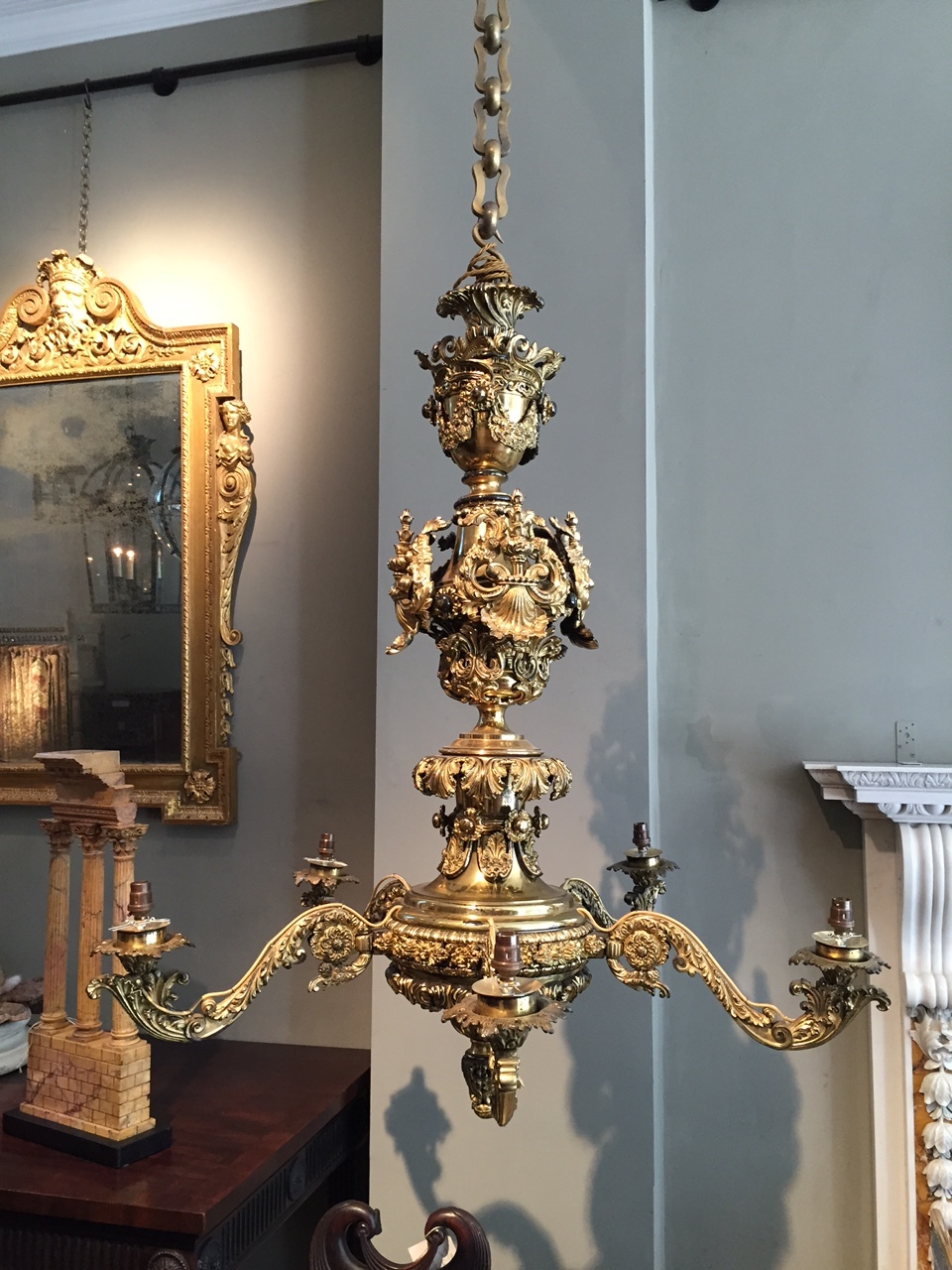
This George IV gilt-brass five light chandelier c.1830, of Louis XIV revival style is exceptionally glamorous. The baluster and vasiform gilt stem with tiers of foliate and shells on the five foliate-S-scrolled candle arms is stamped ‘Messenger’. Thomas Messenger and Sons, were nineteenth century lighting manufacturers and had a metal foundry in Birmingham but opened premises in London in 1826. The chandelier holds a jewel like faded grandeur which every country house requires.
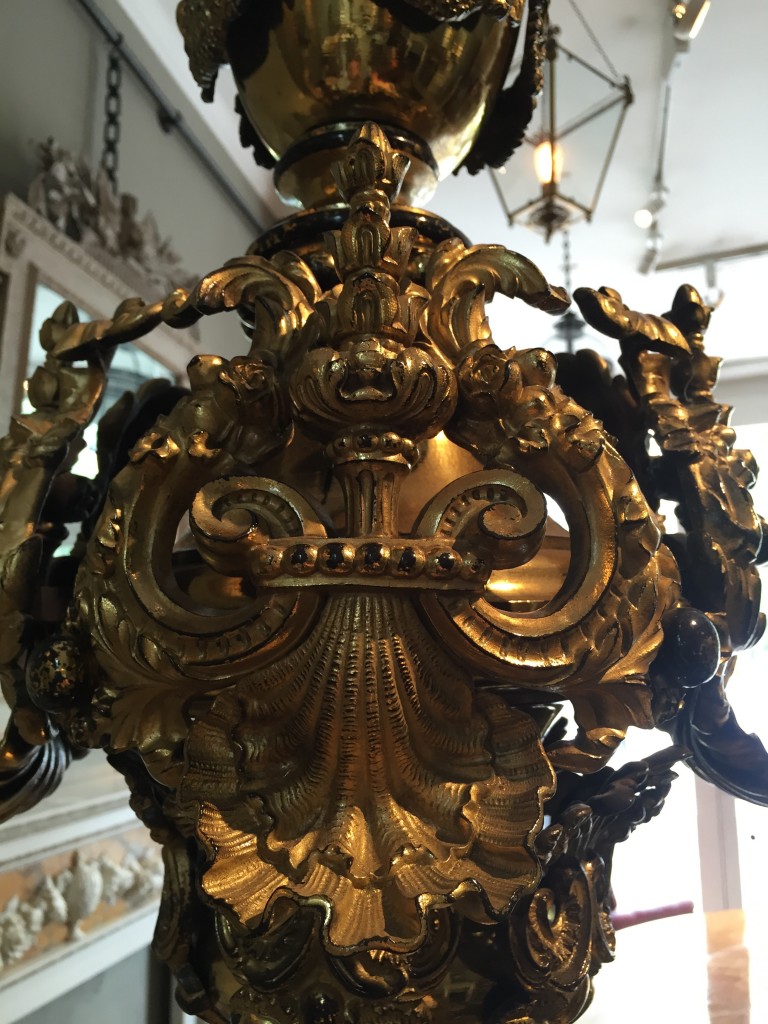
Many of the antiques that we sell were originally commissioned especially for English country houses. Sometimes the story is clear, sometimes you have to piece it together. The Louis XIV revival style of the chandelier above became particularly fashionable in the late 1820’s, following the defeat of Napoleon and was passionately adopted by the Duchess of Rutland, when undertaking the rebuilding of Belvoir Castle. The Duke of York, brother of George IV, was inspired by the Duchess and adopted the style for York House, St James. Years later an identical pair of chandeliers were commissioned, made by the firm Hancock & Ripon & Dante who made many similar pieces for George IV for Windsor Castle.
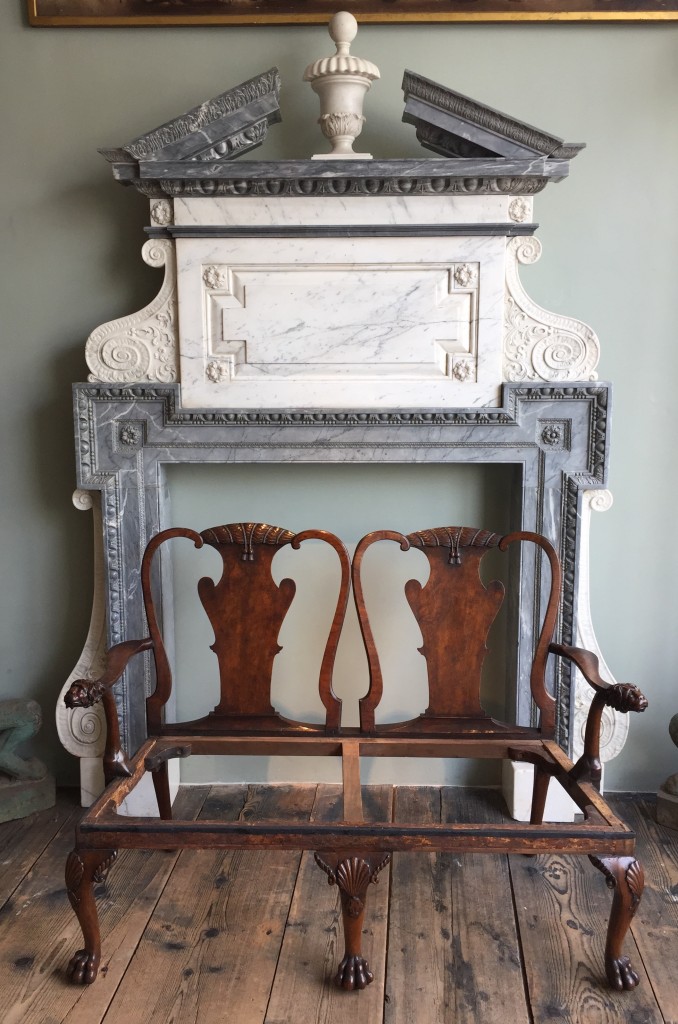
Another exciting addition is an exceptional George I walnut love seat. This has been lovingly restored, bringing the richness of the walnut back to life.
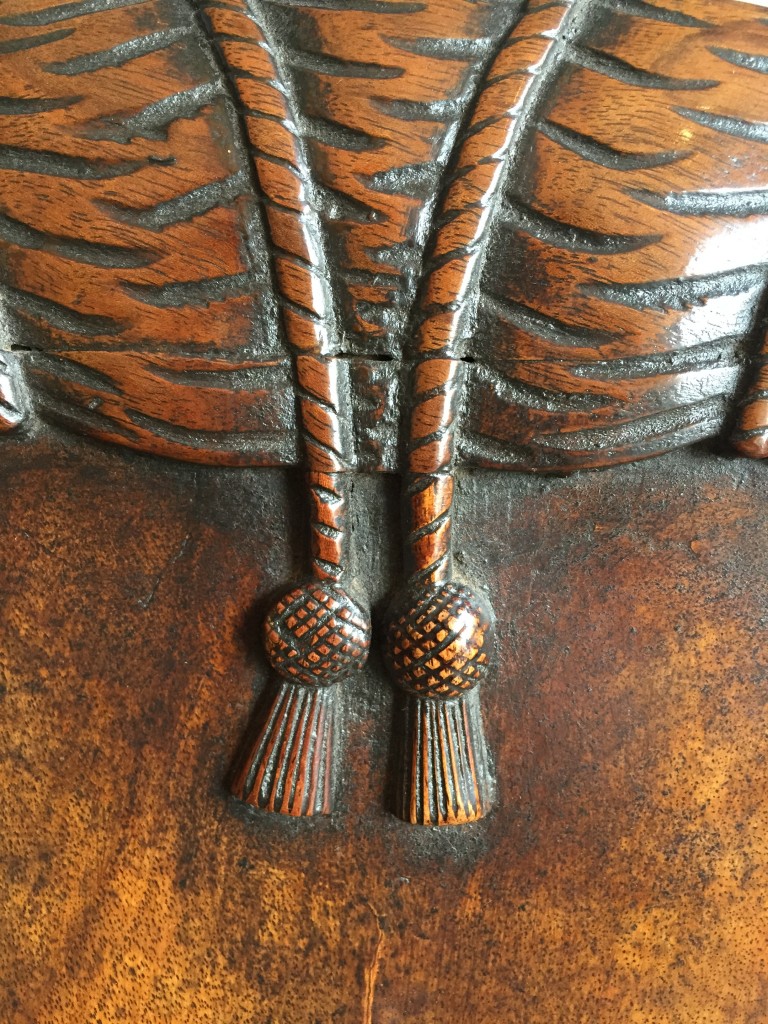
This fine furniture example includes many Georgian design motifs: the scallop shell, paw feet and exquisitely executed lion heads. It is a fine piece and beautifully crafted with a sense of naivety and incorporates Animalia features which I adore.
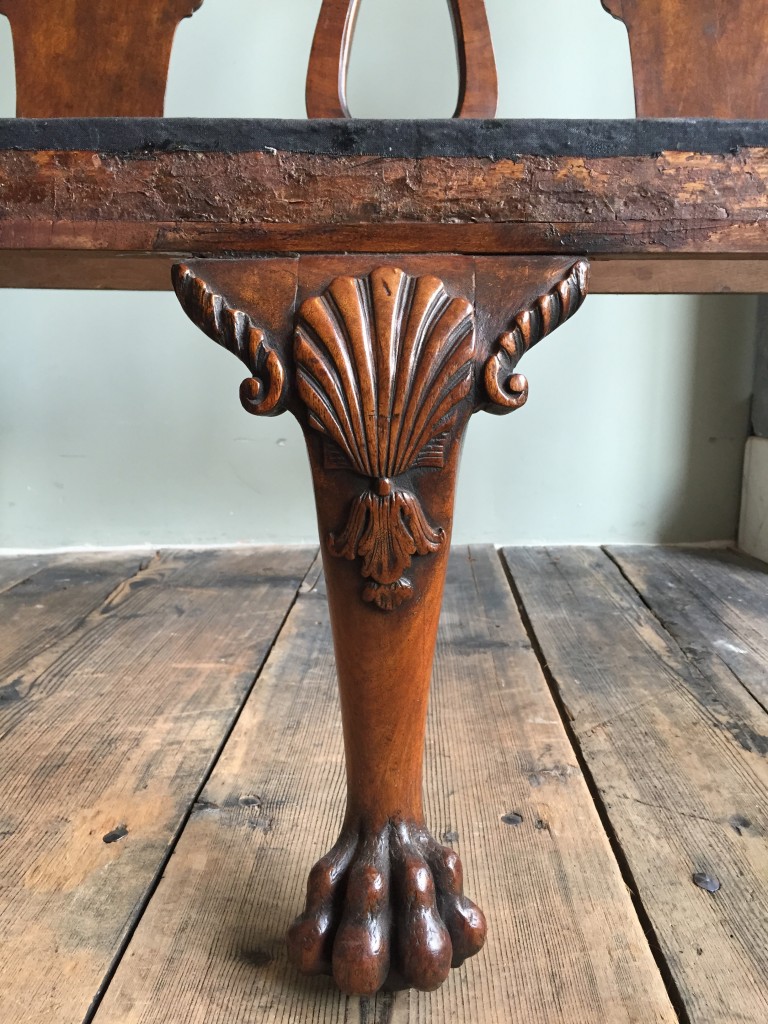
Lastly I couldn’t resist this late 18th, early 19th Century full size wooden sculpture of a horse which reminds me of the Armoury horses from the Tower of London. It is utterly charming and retains its original condition.
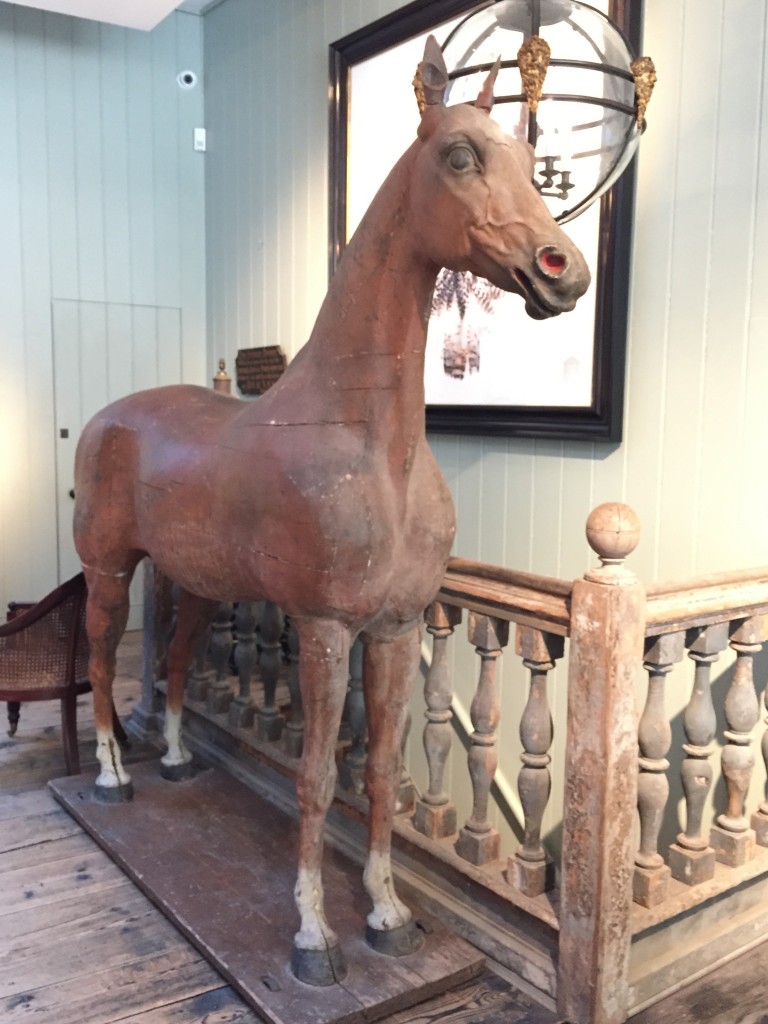
The life-sized carved wooden horses from the Tower of London have an extraordinary history. For centuries, they have been used to display spectacular armours at the White Tower, the oldest part of the Tower, dating as far back as 1652. From 1692 the horses were arranged to create The Line of Kings which claims to be the longest-running visitor attraction in the world, showcasing the Kings and Queens armoury. Definitely worth a visit.



